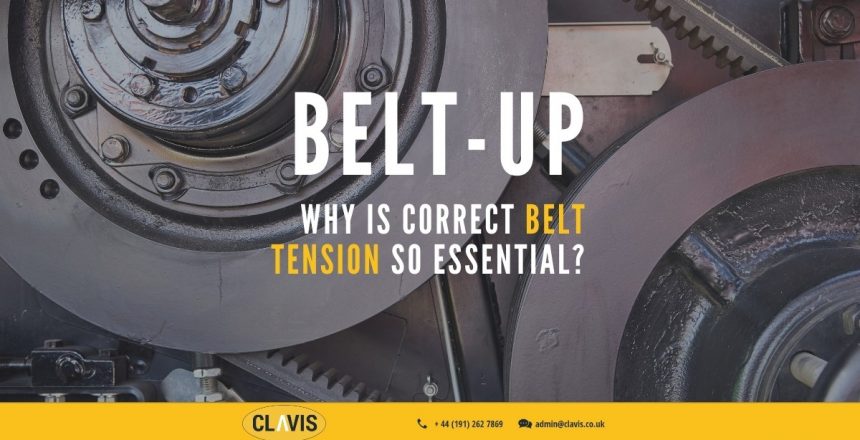They say the devil is in the details, which can also apply to engines. Before faulty drive alignment, incorrect tensioning is the most significant cause of drive belt failures that, in worst case scenarios, can cause engines to fail completely. Here, I explain how manufacturers can avoid costly downtime, and why it’s vital that belt tension is set with precision.
A belt’s purpose is to transmit energy between two components. For this to be achieved, the tension of the belt must be set accurately during installation. Not enough tension can result in slippage, excess heat, premature belt and pulley wear. Meanwhile, excessive tension results in stress on the belt, bearings and shafts.
Problems with belt tension not only arise from when the belt is installed but by a lack of continual maintenance. Factors that influence belt tension over time include heat, which can cause heat-ageing in the belt. This can reduce the adhesion the belt applies to the pulleys, increasing the chance of slippage and rate of wear.
This is even more concerning when not all manufacturers know how to measure belt tension without using a force gauge. Why is this a problem?
Well, a force gauge is a piece of equipment used to manually measure the force of a belt during a ‘push or pull’ test. With the gauge, operators press their thumbs across the belt and use their sense of touch to determine the tightness of a belt. However, these gauges are typically very clumsy, difficult to use in tight spaces and are not always accurate.
So, operators require a more precise option that ensures the tension in belts is set accurately. Clavis’ belt meter range provides just that, so let’s go through the benefits and options.
Efficiency
Insufficient belt tension can reduce system performance and cause other issues like extreme noise that can put workers’ hearing at risk.
And, aside from the negatives, did you know current belt tension can help systems become more efficient? Possible benefits include increased horsepower, which leads to better acceleration, increased speed, torque boost and better fuel economy. Other advantages include a longer operating time, reduced running costs and lower carbon emissions.
“Proper measuring of belt tension should combine with a greater understanding of preventative maintenance, to truly avoid issues like engine failures.”
To lose these disadvantages and embrace the benefits, an alternative to inaccurate force gauges is needed. This is where Clavis’ belt meters come into play.
Belt meter options
Whether it’s an optical head or acoustic head, our frequency belt meters are measured in Hertz (Hz), ranging from 10Hz – 600Hz. At Clavis, we provide two different sensor heads depending on the application.
If the belt is difficult to reach, then an optical head would be more suitable. Let’s focus on automotive — after all, belts power engines in anything from boats or wind turbines to 3D printers. Consider an instance where an engineer needs to measure the belt tension within a tight space. Infrared beams from the optical sensor can reach into those tight-spots a human can’t get into and measure the best-possible area of the belt.
Other engineers may require readings in measurements other than Hertz. Clavis’ range of tension meters give readings in kilogram force (KgF) and Newtons (N) or Pounds (Lbs) and Newtons (N), such as our Type 5 and Type 7. With these meters, operators can switch between measurements giving them a choice of measurement that is suited to their requirements.
Continuing with the automotive scenario, a worker on a production line may work on over 500 cars, on any given day. Therefore, belt meters must also withstand these hard-wearing environments. For example, production line belt meters, such as the Type 14, is cased with aluminium to withstand continuous use in these tough environments.
“Data-driven software technologies are revolutionising manufacturing, and that’s why belt meters are preferable to a force gauge.”
As downtime remains to be the enemy of manufacturers, Clavis’ range of belt meters can ensure that correct belt tension is integral to OEMs production processes and plant setups. Proper belt tension shouldn’t be the devil in the details.
Belt meter questionnaire:
- Can you confirm which industry or sector you would use the product in?
- Which belt meter drive application would you use the belt meter on?
- What environment would you use this product?
- What is the intended setup of your requirements?
- Can you easily access the belt/s?
- What frequency do you need to tension your belt/s?
- Do you require RS232 serial communication for your frequency readings?
Article by Andrew Punton

